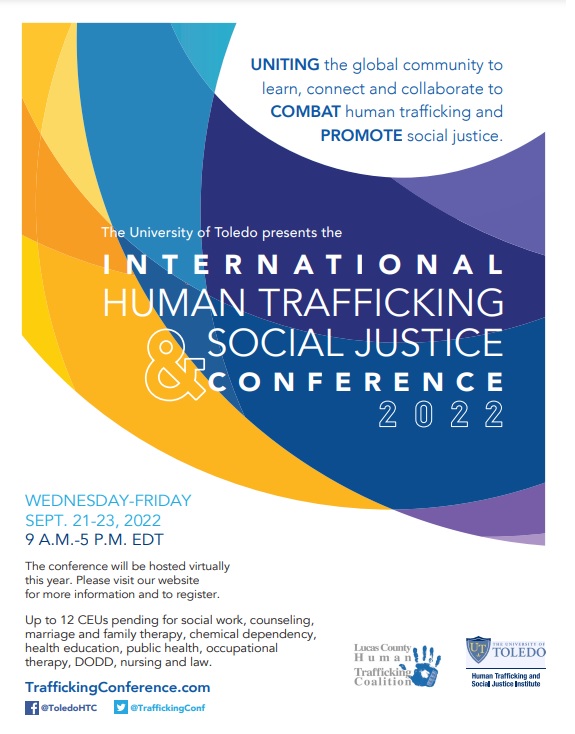When Should You Go No Contact With a Narcissist?

When it comes to the safety of a victim of narcissistic abuse, the no contact rule is by far the best defensive technique one could use to protect their own well-being. However, even though the no contact rule is so good for the victims of narcissistic abuse, it is not always possible to practice it.
Victims of narcissistic abuse should go no contact when they’re certain that there won’t be any significant repercussions for cutting the narcissist out of their life entirely. To truly go no contact with a narcissist the victim must be able to cut the narcissist, their enablers and flying monkeys out of their lives entirely.
When it comes to no contact, cutting off all forms of communication with the narcissist is only the tip of the iceberg and therein lies the danger of going no contact with a narcissist without the proper guidance.
Without the proper guidance, victims of narcissistic abuse may find themselves back in the abuse cycle because they didn’t have a clear understanding that going no contact with the narcissist means no contact with their enablers and flying monkeys as well.
 It is impossible to go no contact until you have a clear understanding of the hidden aspects of going no contact with a narcissist. So, this article is going to help you uncover those hidden aspects of going no contact and help you understand exactly when you should go no contact with a narcissist.
It is impossible to go no contact until you have a clear understanding of the hidden aspects of going no contact with a narcissist. So, this article is going to help you uncover those hidden aspects of going no contact and help you understand exactly when you should go no contact with a narcissist.
The Hidden Aspects of Going No Contact With a Narcissist
One of the most challenging hurdles one must overcome when going no contact with a narcissist is the fear of the unknown. You see, narcissistic behavior patterns are designed to hijack the victim’s identity.
Using manipulative behaviors like gaslighting, scapegoating and narcissistic rage, narcissists are able to manipulate their victims so severely that the victim’s psyche gets plagued with fear, guilt, shame, doubt and grief by the mere thought of going no contact with the narcissist in their lives.
You should read our article Managing the Negative Emotions From Going No Contact With a Narcissist if you want to grasp a better understanding of just how hard going no contact is because in this section we are going to focus on how flying monkeys and narcissist enablers often push the victim straight back into the abuse cycle they worked so hard to escape from.
How Do Flying Monkeys Dismantle the No Contact Rule
A flying monkey, someone a narcissist manipulates into participating in their smear campaign of the victim, is one of the most common ways a narcissist will attempt to dismantle the no contact rule when they’re unable to do so themselves.
The tricky part about flying monkeys is that they’re often your friends and family. The reason for this is that flying monkeys are a manifestation of a narcissist’s fear of being exposed. You see, people with narcissistic personality disorder spend their entire lives hiding behind a falsified identity.
Why?
An unhealthy/abusive childhood has left them emotionally immature, insecure and vulnerable. These are characteristics that many non-narcissistic individuals have as well, however, people with narcissistic personality have developed a deep hatred for themselves because they believe that their true identity will be rejected by society.

Obviously there is a lot more to narcissistic personality disorder than their fear of rejection but I wanted to zero in on this fear because it is the driving force of the abusive behavior patterns narcissists display on a daily basis.
Why was that important to know?
This fear is so intense that people with narcissistic personalities are constantly scanning their environment for possible threats to their identity. When their victim, one of the few people who know their true identity, escapes the narcissistic abuse cycle they go into attack mode.
Enlisting flying monkeys is a narcissist’s favorite way to silence their victims when they’ve lost control over them. If a narcissist is able to successfully portray themselves as the victim and the victim as the abuser to friends and family members, they’ll be able to ensure that the truth about their falsified identity never gets revealed.

The thing about flying monkeys is that they are simply people who believe in the narcissist’s version of reality. They’ve been known to do anything from being disgustingly abusive towards the victim to pretending to be the victim’s friend to get information to bring back to the narcissist.
The most common way flying monkeys attempt to dismantle the no contact method is when they’re attempting to convince the victim to reconcile with the narcissist, apologizing for the narcissist, or attempting to be the mediator for the situation.
Obviously, this is not a good situation when trying to go no contact with a narcissist. No contact means NO CONTACT. But, the reasoning behind the danger of not cutting off flying monkeys when going no contact is a bit more complicated than it may seem.
Before we get to that, let’s take a look at how narcissist enablers complicate the no contact rule with a narcissist. The reason you should understand this first is because the dangers of not cutting off flying monkeys when going no contact with a narcissist apply to narcissist enablers as well.
Understanding How Narcissist Enablers Complicate the No Contact Rule With a Narcissist
A narcissist enabler is a person who doesn’t understand narcissism, narcissistic abuse and/or narcissistic personalities so they approach the situation as they would a healthy relationship.
As innocent as they may be, their ignorance causes them to gaslight the victim. The only difference between a flying monkey and a narcissist enabler is their intent. You see, flying monkeys truly believe in the narcissist’s falsified narrative that portrays them as the victim and the victim as the abuser so they are often very aggressive towards the victim.
Enablers can be just as aggressive, but it is not because they were manipulated by the narcissist into doing so. Rather, they may be the type of person who believes that it is horrifying to call someone narcissistic. Or they may be the type of person who is on a self-righteous power trip and only sees the good in others.
Seven Phrases Narcissist Enablers Say:
- Wow! Are you sure it happened like that?
- Well, relationships aren’t meant to be easy.
- I’m sure he/she is just joking around, they do that to everyone!
- That doesn’t sound like the Mike/Rachel I know…
- I will talk to him/her for you.
- Maybe you two need to work on your communication skills.
- It sounds like you might be exaggerating a bit.

The good news is that with the right approach, narcissist enablers can be converted into supporters. Learning how to explain narcissism to others is one of the most important skills victims of narcissistic abuse need to develop when looking for supporters.
The problem that many victims of narcissistic abuse run into is that the moment they mention anything related to narcissism, they’re scolded, ignored, or shamed for it.
So, by learning how to explain the specifics of the narcissistic behavior patterns that they’re experiencing rather than calling their abuser a narcissist or narcissistic, the chances that they’ll be able to turn narcissist enablers into supporters is very high.
If you want to learn how to explain narcissism to others, please check out our article How to Explain Narcissism to Others for a complete guide to this awesome technique!
Why Is It Important to Cut Off Narcissist Enablers and Flying Monkeys When Going No Contact With a Narcissist?
The harsh reality that victims of narcissistic abuse have to face is that narcissist enablers and flying monkeys are often people that the victim would normally confide in. They could be friends and family or even authoritative figures like therapists, doctors and law enforcement.
This is very problematic because narcissistic abuse is designed to hijack one’s identity, dismantle their core values and cause them to question their own sanity. What tends to happen is that when victims of narcissistic abuse are able to escape the abuse cycle, they confide in others to have their own reality validated.
What does this mean?
It means that victims aren’t confiding in others because they know for a fact that the abuse they suffered was wrong. They’re confiding in others because they aren’t sure whether or not they’ve made the right decision by leaving and need to have their reality validated for reassurance.
So, when they’re searching for this reassurance but are met with gaslighting and other forms of narcissistic abuse commonly seen perpetuated by narcissist enablers and flying monkeys like scapegoating and triangulation, the chances of them doubting/blaming themselves for the downfall of the relationship is very high.
It’s impossible to explain the severity of this situation. When a victim of narcissistic abuse does all of the hard work it takes to pull themselves out of the depths of self-blame and self-doubt narcissistic abuse places them in only to be led to believe that they were to blame for everything it is chatostrophic to their well-being.
It is circumstances like these that cause people to be trapped within the narcissistic abuse cycle for decades.
Victims of narcissistic abuse should only go no contact with their abuser when they’ve grasped a comprehensive understanding of all the hidden aspects of going no contact with a narcissist. Narcissistic abuse is ruthless. So, victims of narcissistic abuse have to be just as ruthless when it comes to protecting their well-being from flying monkeys and enablers.

With that being said, cutting off friends and family is NEVER an easy task. One of the most common worries victims of narcissistic abuse have when attempting to truly go no contact is the worry that they’re being cruel.
One of the biggest reasons for this worry is that flying monkeys and enablers will attempt to portray the victim in a bad light for using the no contact method. The truth is that using the no contact rule is an act of self-love.
This article has been reviewed by our editorial board and has been approved for publication in accordance with our editorial policies.






